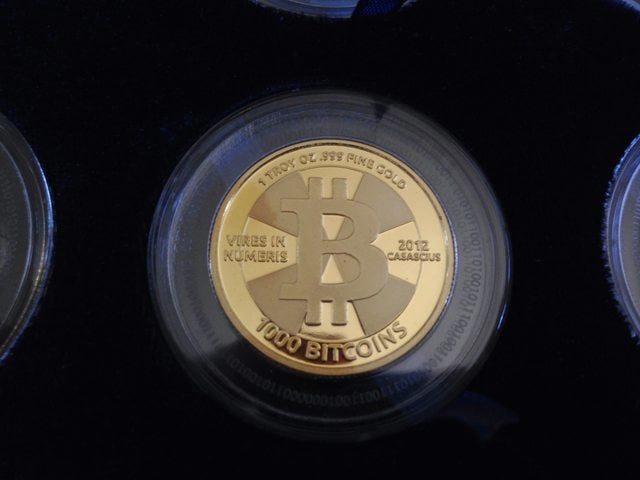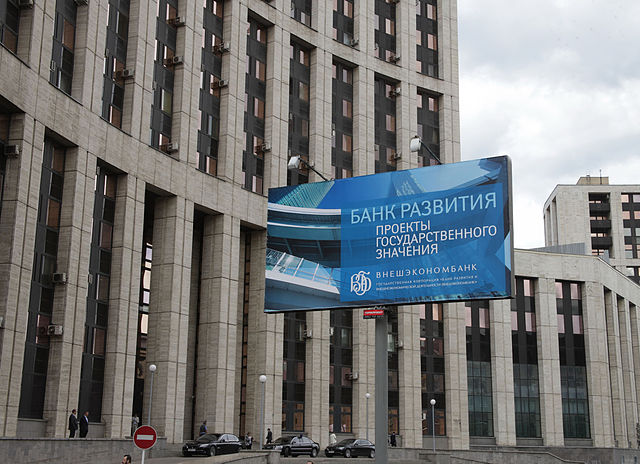(This is a translated version of Bitmain’s original blog post, which is in English)
Definiciones
UASF: bifurcación blanda activada por el usuario. Los desarrolladores añaden un juego de reglas obligatorio para cambiar el software del nodo, invalidando ciertos tipos de bloques previamente válidos después de un flag day. Este método no requiere una mayoría de mineros que apoyen o activen la división de la cadena. La propuesta de UASF pretende hacer un ataque de 51% contra la cadena de bloques que tenga la mayoría de la actividad económica y este ataque se llama “Desaparición”.
UAHF: bifurcación dura activada por el usuario. Los desarrolladores añaden un juego de reglas obligatorio para cambiar el nodo de software. Estos cambios hacen que bloques no válidos previamente se vuelvan válidos después de un flag day, lo que no requiere una mayoría de potencia de hash para que se ejecute. Los nodos con los cambios en el juego de reglas seguirán esta cadena independientemente de su tasa de hash. La propuesta de la UAHF es una desviación pacífica y voluntaria de diversos miembros de la comunidad que tienen opiniones o visiones diferentes y no se pretende atacar otras cadenas de bloques, incluso aunque la cadena UAHF tenga la tasa de hash más alta.
Nodo BIP148: un nodo de Bitcoin que ha implementado los cambios de la regla de consenso BIP148.
Cadena BIP148: una cadena de bloques que es válida según los cambios de la regla del consenso BIP14. BIP148 es un tipo de UASF.
Cadena original: la cadena de bloques que usa las mismas reglas de consenso utilizadas en la actualidad (26 de mayo de 2017).
Desaparición: si la cadena UASF está activada y gana la mayoría de tasa de hash, entonces los nodos que siguen a la cadena original se reorganizarán y empezarán a seguir a la cadena UASF. Si esto se produce, un número significativo de registros de transacciones financieras desaparecerá. Es un riesgo que los nodos UASF imponen a los nodos que intentan seguir a la cadena original. Por el contrario, UAHF no amenaza a los nodos que siguen un juego de reglas diferente que tienen este mismo riesgo.
Bit 1: el bit de versión BIP9 en la cabecera de un bloque usado para indicar una activación de SegWit.
Riesgo de estancamiento: una cadena de bloques sin el apoyo de la minería puede dejar de extenderse de repente porque el incentivo económico para los mineros es bajo. Una bifurcación minoritaria como UASF está bajo serio riesgo de un estancamiento permanente.
Antecedentes
El 24 de mayo de 2017, una mayoría económica significativa, de más del 80% de toda la potencia de hash y el 80% del software o servicio de la fuente de las transacciones de la industria del Bitcoin, llegaron a un acuerdo en Nueva York (Acuerdo de Nueva York) sobre los pasos tangibles para escalar el Bitcoin en el futuro próximo. Los representantes de Bitcoin Core rechazaron la invitación para asistir a este encuentro. Este acuerdo es el trabajo duro de aquellos que creen sinceramente en el Bitcoin y empresarios o inversores que tienen un gran interés financiero en escalar el Bitcoin de un modo rápido y unido. Bitmain apoya el acuerdo. Apoyamos el acuerdo y queremos que se haga realidad lo antes posible.
El proyecto de software btc1, que está abordando el acuerdo de Nueva York, ha estado en desarrollo activo y probablemente entregará un plan de cambio de regla de consenso llamado SegWit2x. El testnet5 para SegWit2x ya está listo. La versión Alpha del software saldrá el 16 de junio y todo va sin retraso.
Sigue el github aquí:
Lee una discusión de reddit sobre él aquí:
https://www.reddit.com/r/btc/comments/6h1wpr/segwit2x_a_summary/
Suscríbete a la lista de correos:
https://lists.linuxfoundation.org/mailman/listinfo/bitcoin-ml
A pesar de este acuerdo, el movimiento de astroturfing de la UASF (BIP148) sigue recibiendo mucha atención en foros censurados, muchos de los cuales están controlados por individuos anónimos. Muchos de los desarrolladores de software que trabajan en un proyecto de software llamado “Bitcoin Core” también lo apoyan. BIP148 supone un riesgo significativo para el ecosistema Bitcoin, así que estamos preparando un plan de contingencia para proteger la actividad económica de la cadena de bloques de Bitcoin de esta amenaza.
El acuerdo de Nueva York está siendo saboteado de manera continua e intencional por un grupo de desarrolladores de software que trabajan en Bitcoin Core. También debemos estar preparados para el riesgo destructivo que la activación de la UASF traerá a la red de Bitcoin. El acuerdo de Nueva York es muy conservador y está dirigido a traer la paz a la comunidad del Bitcoin en un problema de escalabilidad simple pero artificialmente ampliado. Si, de algún modo, el acuerdo de Nueva York no puede impedir la división de la cadena, debemos estar preparados.
El propósito de esta publicación de blog es anunciar nuestro plan de contingencia UAHF para la UASF/BIP148.
Por qué necesitamos un plan de contingencia en contra del BIP148
Según el BIP148, cuando la MTP de la cadena esté en o más allá del jueves, 1 de agosto de 2017 a las 12:00:00 GMT (hora epoch 1501545600), los nodos BIP148 empezarán a abandonar los bloques de Bitcoin que no señalen a Bit 1 como su punto de bifurcación UASF. Este cambio en la regla de consenso hace el juego de reglas más pequeño que la cadena original antes de la activación de BIP148. Los nodos BIP148 seguirán la nueva cadena BIP148 si hay una potencia de hash mayor que cero apoyándola; si la potencia de hash que apoya la cadena es 0, los nodos BIP148 encontrarán que su cadena no puede extenderse.
Si hay potencia de hash apoyando la cadena BIP148, no hace falta que sea una mayoría de potencia de hash la que permita que la cadena se extienda. Incluso si hay solo una persona resolviendo hashes a mano, con el tiempo suficiente la cadena BIP148 puede ser extendida por otro bloque. Según la distribución de tasa de hash existente, algunos operadores de pools de minería bien conocidos han afirmado que apoyarán la UASF al permitir a los mineros elegir, aunque su potencia de hash total no sea suficiente para asegurar una mayoría. Una empresa que contrata muchos desarrolladores de protocolos de Bitcoin cruciales controla ya parte de su propia pequeña tasa de hash, según su director ejecutivo. Por tanto, la red de Bitcoin tiene un alto riesgo de dividirse el 1 de agosto de 2017.
BIP148 es muy peligroso para las transacciones y otros negocios. No hay indicios de apoyo económico significativo tras el BIP148 y cuando cobre vida como cadena de bloques, el apoyo económico estará probablemente basado en la especulación. La actividad de minería tras una cadena UASF podría pararse sin avisar y los inversores que compraron gracias a la propaganda del BIP148 podrían perder toda su inversión. Todas las transacciones que decidan apoyar un identificador UASF tras el punto de bifurcación deben considerar el riesgo de estancamiento asociado.
No hay protección ante la repetición en una cadena BIP148. Las transacciones se transmitirán a ambas cadenas y los usuarios no podrán impedir que se confirmen en ambas. Los agentes de compra-venta deben detener las retiradas y depósitos en el punto de bifurcación durante un tiempo y desplegar sus propios métodos de división de monedas. Si deseas más información, lee la sección de Referencias de esta publicación: Mitigating Bitcoin Forking Risk during Network Upgrade.
La cadena UASF representa un riesgo de que la cadena desaparezca. Si no hay un plan de contingencia, toda la actividad económica que se produzca en la cadena original después del punto de bifurcación UASF se enfrentará al riesgo de ser eliminada. Esto tiene unas consecuencias desastrosas para todo el ecosistema Bitcoin. UASF es un ataque contra los usuarios y las empresas que no están de acuerdo en activar SegWit ahora mismo sin un aumento del tamaño de los bloques, que es una cláusula muy importante del acuerdo de Hong Kong hecho por la comunidad global de Bitcoin en febrero de 2016. El riesgo de reorganización de la cadena es más significativo de lo que se imagina, tal y como lo analiza Peter R. en BUIP055,
Fundamentos para la protección ante la reorganización
La probabilidad (P) de que la cadena de bloques grandes se reorganice para volver a ser una cadena de bloques pequeños viene dada por
P = (q/p)^2
Donde p es la fracción de la potencia de hash que mina la cadena de bloques grandes y q es la fracción de la potencia de hash que queda en la cadena de bloques pequeños [2]. Con el 75% de la potencia de hash apoyando bloques más grandes, la probabilidad de una reorganización es del 11%.
Plan de protección
Este plan es para una bifurcación dura activada por el usuario o UAHF. Puedes encontrar especificaciones técnicas aquí:
https://github.com/bitcoin-UAHF/spec/
La hora de activación puede configurarse. Haremos la bifurcación dura 12 horas y 20 minutos más tarde que la UASF. La hora epoch será 1501590000.
Existirá una regla“debe ser grande” en el bloque de la bifurcación. El tamaño del bloque de la bifurcación debe ser mayor que 1.000.000 byte. El bloque de la bifurcación es el primer bloque que adopte el cambio de la regla de consenso.
Aceptará el bloque cuyo tamaño sea menor de 8 MB y nosotros, los mineros, limitaremos de forma blanda el tamaño del bloque a menos de 2 MB.
Se añadirá una regla de bifurcación blanda al protocolo para limitar las SigOps por transacción a 20 K.
El tamaño del bloque no será parte de la regla de consenso de código duro en el futuro después de la bifurcación del bloque. Los mineros que generen boques grandes serán castigados en los incentivos económicos pero no con la limitación del tamaño del bloque.
Habrá una protección para el ataque de repetición disponible para los agentes de compra-venta y los desarrolladores de carteras. Puedes encontrar las especificaciones aquí:
https://github.com/Bitcoin-UAHF/spec/blob/master/replay-protected-sighash.md
Bitmain usará parte de su propia tasa de hash y trabajará con la comunidad de desarrolladores para tener un plan de contingencia basado en UAHF. Desarrollaremos opciones para que los mineros se nos unan voluntariamente.
Bitmain minará la cadena durante un mínimo de 72 horas después del punto de bifurcación BIP148 con un cierto porcentaje de potencia de hash suministrado por nuestras propias operaciones de minería.
Bitmain, probablemente, no liberará de inmediato los bloques minados a la red pública a no ser que las circunstancias lo exijan, lo que significa que Bitmain minará esa cadena de forma privada primero. Pretendemos liberar los bloques minados en las siguientes situaciones (no es una lita exhaustiva):
- La cadena BIP148 se ha activado y posteriormente obtiene un apoyo significativo de la industria minera; es decir, después de que el BIP148 haya dividido con éxito la cadena.
- Haya unfuerte deseo del mercado de una bifurcación dura de bloques grandes y fundamentos económicos que nos lleven a minarla; por ejemplo, el tipo de cambio está a favor de un Bitcoin de bloques grandes.
- Si ya hay una cantidad significativa de mineros que estén minando una cadena de bloques grandes públicamente y decidimos que es lógico que minemos encima de esa cadena. En ese caso, también tendremos en cuenta unirnos a esa cadena y abandonar nuestra cadena minada en privado para que la cadena pública UAHF no corra el riesgo de ser reorganizada.
Una vez que Bitmain empiece a minar una cadena UAHF públicamente, la minaremos de forma persistente e ignoraremos los incentivos económicos a corto plazo. Creemos que una hoja de ruta que incluya la opción de ajustar el tamaño del bloque será más útil a los usuarios, así que esperamos que atraiga un precio de mercado más alto a largo plazo. La red económica se expandirá más rápido y las probabilidades de ganar serán más altas en un mercado de criptomonedas altamente competitivo.
Compartimos la idea de los primeros bitcoiners de que la descentralización significa que más de 1000 millones de personas en 200 países están usando el Bitcoin como moneda de ahorro y red de pago y que abarca cientos de miles de servicios, comerciantes, transacciones y software de Bitcoin. No creemos que la descentralización signifique poner un límite de 1 MB en el tamaño de los bloques o la responsabilidad de reducir el tamaño del bloque para que un Raspberry Pi pueda ejecutar todo un nodo y que la tarifa por transacción de Bitcoin sea más alta que el ingreso diario en la mayor parte de los países en desarrollo. Creemos que el Bitcoin debe ofrecer a la gente la posibilidad de prosperar sin depender de poderosas autoridades que cobren comisiones que puedan ser de hasta 100 $ por transacción.
Desarrollo de software
En la actualidad, hay al menos tres equipos de desarrollo de cliente trabajando en el código de la especificación. Todos desean estar en silencio y alejados de la propaganda y del ejército de troles de ciertas empresas. Se darán a conocer cuando estén preparados. Los usuarios podrán instalar el software y decidir si se unen al UAHF.
Se espera que el software esté listo antes del 1 de julio y estará funcionando en testnet para entonces.
Hoja de ruta futura
Si se activa el acuerdo de Nueva York
Deseamos que el acuerdo de Nueva York se desarrolle y se lleve a cabo correctamente. Es la última esperanza para escalar el Bitcoin de manera unida de cara a la amenaza del BIP148. Haremos lo que podamos para desplegarlo y activarlo lo antes posible.
Si BIP148 se activa
En ese caso, UAHF se activará el mismo día. La cadena UAHF protegerá las transacciones económicas que corren riesgo de reorganizarse debido al UASF.
Después, apoyaremos la activación del SegWit en la cadena UAHF si no hay un riesgo patente asociado al SegWit y si la tasa de descuento arbitraria del segmento de datos de testigos se elimina. El parámetro de peso, que está diseñado para las tasas artificiales, tendrá que ser eliminado y tendremos que ser francos y directos en el código del software sobre las distintas limitaciones en diferentes tipos de bloques y otros parámetros. Un SegWit sin la tasa de descuento artificial tratará el tipo de transacción heredado de manera justa y no dará a las transacciones SegWit una ventaja injusta. También ayudará a aumentar la capacidad de SegWit de manera más significativa que con la tasa de descuento. Además impulsaremos y fomentaremos cambios en el código, en el bloque principal o en los bloques de extensión que harán que Lightning Network funcione de modo más seguro y fiable que la actual versión de SegWit de Core.
Los bloques de extensión se desarrollarán como marco para animar a diversos equipos de desarrollo de protocolos a aportar innovaciones y capacidades al protocolo Bitcoin. Algunas innovaciones importantes aunque agresivas pueden introducirse sin afectar a todos los usuarios o empresas de Bitcoin del mundo. Esto acelerará la innovación del protocolo Bitcoin. Las cadenas laterales (sidechains) también se fomentarán cuando la comunidad técnica haya revisado los problemas de seguridad asociados. Los mineros se ven sinceramente impulsados por la esperanza de que el Bitcoin sea un éxito.
Fomentaremos y ayudaremos a que se produzcan diversas soluciones multicapa. Siendo uno de los primeros inversores de RootStock, identificamos el potencial de otra importante criptomoneda competidora. Ya estamos trabajando en estrecha colaboración con autores de otras soluciones multicapa.
Debería promoverse un nuevo servicio de seguridad SPV de nodos completos, así como una mayor investigación y bibliotecas compatibles con el modelo SPV entre los desarrolladores de carteras.
Si Bitcoin puede combinar Bitcoin NG, de Emin, y Lumino, de Sergio, entonces puede alcanzarse con facilidad un aumento del rendimiento de la actual red de Bitcoin hasta 100 veces más con un tamaño de bloques de unos 100 KB pero con una frecuencia de generación de bloques más alta. La propuesta original Bitcoin NG es de bifurcación dura pero podemos hacerla blanda en el protocolo con el marco del bloque de extensión. Al mismo tiempo, RootStock, cofundado por el inventor de Lumino, también está intentando implementar Lumino en RootStock. Lumino funcionará perfectamente con Lightning Network. Será interesante ver qué implementación producirá Lumino en primer lugar y de qué modo.
La firma Schnorr está también en la revisión de su última etapa.
Deberá promoverse la diversificación del desarrollo del cliente. El concepto de consenso defensivo se está desarrollando y ayudará a la industria minera. El consenso defensivo ayudará a la red de Bitcoin a funcionar de manera segura mientras múltiples implementaciones funcionan a la vez.
Hay y habrá otras buenas innovaciones en la comunidad de Bitcoin que no se han fomentado adecuadamente por diversos motivos. Esperamos trabajar activamente en esas innovaciones.
BUIP056 se desarrollará para gestionar el problema del tamaño del bloque antes de que se acepte ampliamente un modelo de gestión del tamaño del bloque totalmente automático y matemático. Como se ha visto en los últimos años de debate, los mineros han demostrado ser muy conservadores y dispuestos a trabajar con la comunidad económica más amplia. A continuación se encuentra la hoja de ruta del aumento del tamaño del bloque para los próximos años.
| Fecha | Tamaño del bloque, Byte |
| Ahora | 1.000.000 |
| Agosto, 2017 | 2.000.000 |
| Sept., 2017 | 4.194.304 |
| Abril, 2018 | 5.931.641 |
| Agosto, 2018 | 8.388.608 |
| Abril, 2019 | 11.863.283 |
| Agosto, 2019 | 16.777.216 |
| Después de agosto, 2019 | Depende de la investigación futura |
Deberán desarrollarse y desplegarse bloques más débiles antes de que el tamaño del bloque alcance los 8 MB.
Referencias
Para conocer otros grupos del ecosistema, recomendamos una investigación detallada sobre los efectos del UASF. Todos los negocios basados en Bitcoin deberán estar preparados ese día para mitigar o eliminar el riesgo que trae consigo el UASF.
Mitigating Bitcoin Forking Risk during Network Upgrade, https://github.com/digitsu/splitting-bitcoin
Si deseas saber más sobre bifurcaciones minoritarias, lee la presentación de Meni Rosenfeld:
How I learned to stop worrying and love the fork
https://fieryspinningsword.com/2015/08/25/how-i-learned-to-stop-worrying-and-love-the-fork/
A Fork in the Road: Must we Choose a Path?
https://www.youtube.com/watch?v=kkJHOpuvQo0&feature=youtu.be
Esta es una carta para ayudaros a entender la historia y el cuadro completo del gran debate de la escalabilidad del Bitcoin incluso si no sois mineros:
An Open Letter to Miners
https://www.reddit.com/r/btc/comments/6befxw/an_open_letter_to_bitcoin_miners_jonald_fyookball/
Este es otro blog para ayudarte a entender lo que pasará con la bifurcación BIP148:
https://medium.com/@jimmysong/uasf-bip148-scenarios-and-game-theory-9530336d953e
(This is a translated version of Bitmain’s original blog post, which is in English)
---------------------Liked this article? Share it with others:
Follow Us for Latest News & Articles:



 In April 2011, bitcoin
In April 2011, bitcoin 


